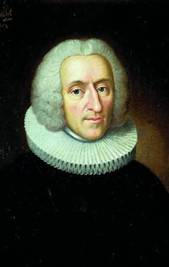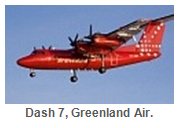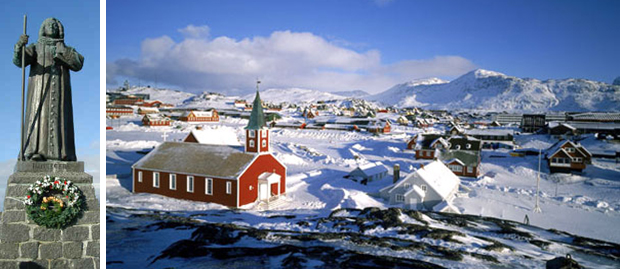
THE VOICE OF INTERNATIONAL LITHUANIA
|
VilNews has its own Google archive! Type a word in the above search box to find any article.
You can also follow us on Facebook. We have two different pages. Click to open and join.
|
“Give us this day our
daily harbour seal”
 The harbour seal is found along temperate and Arctic marine coastlines of the Northern Hemisphere. |
 Hans Egede (1686 – 1758) was a Norwegian missionary, known as the Apostle of Greenland. |
Many of us remember our Lord’s Prayer, or Pater Noster as many call the most outstanding prayer of Christianity. One phrase goes as follows: “Give us this day our daily bread,..” This became an ever so slight nut to crack for the North Norwegian priest Hans Egede when he came to Greenland to preach in the 1700s. The indigenous people who populated the world's largest island, the Inuits, did not know what bread was!
But the priest found a solution, and in his translation to Inuit language the phrase became therefore logically enough, "Give us this day our daily harbour seal." Because it was these seals that were the most important element of the Inuit food chain at the time...
It was Hans Egede, often called the Apostle of Greenland, who founded the town of Nuuk (Godthåb), capital of today's Greenland. His statue stands solidly on its base in the outskirts of the town.
Nuuk (Godthåb), the capital of Greenland, offers colourful architecture where the winter bites as coldest
 I sit at Kastrup Airport near Copenhagen, Denmark, an early February morning. Waiting to border the Scandinavian Airlines flight to Kangerlussuaq Airport in Greenland. Then comes the message: The flight is cancelled. Luckily I get on a plane from Greenland Air, and a couple of hours later I am sitting in a red Boeing 757 heading northwest. I have been awarded a seat between two mildly said overweight Inuits, Eskimoes as we used to call them in the past. It smells of sweat and I am unable to find room for my arms on the armrests. After four and a half hour of torment we land in the icy wilderness. The temperature outsideis -40C, inside the terminal building it is a little warmer. But not much.So I'm very happy when I finally, after several hours waiting time, get on board a red propeller plane, a Dash 7, flying me to Greenland's capital Nuuk further south on the island. The trip takes only an hour.
I sit at Kastrup Airport near Copenhagen, Denmark, an early February morning. Waiting to border the Scandinavian Airlines flight to Kangerlussuaq Airport in Greenland. Then comes the message: The flight is cancelled. Luckily I get on a plane from Greenland Air, and a couple of hours later I am sitting in a red Boeing 757 heading northwest. I have been awarded a seat between two mildly said overweight Inuits, Eskimoes as we used to call them in the past. It smells of sweat and I am unable to find room for my arms on the armrests. After four and a half hour of torment we land in the icy wilderness. The temperature outsideis -40C, inside the terminal building it is a little warmer. But not much.So I'm very happy when I finally, after several hours waiting time, get on board a red propeller plane, a Dash 7, flying me to Greenland's capital Nuuk further south on the island. The trip takes only an hour.
 I have come to Nuuk to monitor the construction of town-houses I had designed during the previous year from my architect office in Vilnius. I could hardly believe my ears when, a few months ago, I was told that the colours we should use was bright yellow, turquoise, pink and purple. All in pastel tones.
I have come to Nuuk to monitor the construction of town-houses I had designed during the previous year from my architect office in Vilnius. I could hardly believe my ears when, a few months ago, I was told that the colours we should use was bright yellow, turquoise, pink and purple. All in pastel tones.
Now I stand here in the bitter winter cold, watching the walls, manufactured in Lithuania, being lifted into place. I see that many of the houses around are also unusually colourful. Perhaps it is so that the colours give a little warmth in the otherwise barren, windswept winter landscape. Or is colour perception different for Inuits and other indigenous peoples than for us 'younger' versions of the human race?
The town of Nuuk is barely 300 years old, but this area has a long history of settlement, first occupied by the old pre-Inuits, the Paleo-Eskimos. Their Saqqaq culture dates as far back as 2200 BC when they lived in the area around a now abandoned settlement called Qoornoq. Over time the area was occupied by the so-called Dorset culture, which, however, disappeared from the Nuuk district, even before year 1000. The Norwegian Viking Erik the Red founded the first European settlements here, at the end of the 900s.The area was after that inhabited by the Vikings through a few hundred years. Inuits and Norwegians lived side by side until around 1500 when the Norse settlements ceased, probably due to changes in climate. It was also here the Viking ships sailed further west and came to Nova Scotia in today's America in the year 1000.
The Viking who led his armada of Viking ships to America was Leif Ericson. He came from a long line of explorers, and unfortunately murderers as well. Leif's great-great-great uncle, Nadod, discovered Iceland in about 861, and Leif's father, Erik Thorvaldson, otherwise known as Erik the Red, discovered Greenland around 970-980. After his father died, Erik moved to a different area of Iceland and got married. The next two incidents shaped the future. Erik himself was exiled and outlawed twice; the first time because his slaves caused a landslide that ruined a man's property. The second time, Erik attempted to get a family heirloom back, he and the men supporting this act, were attacked, and ended up murdering the man's sons and several of his supporters. So once again Erik was outlawed. Erik decided to venture out and explore during his three years of exile. It was during this time, about 970 A.D. that Leif was born to Erik the Red.
Leif's voyage to America was planned and had a forceful, brave, shrewd leader who was careful in all things. His discovery, then, was not an accident, as those who give too little credence to Viking navigational skills intimate. He set sail probably in 995, passed Markland (Labrador), and reached Newfoundland, where his thirsty crewmen drank dew from the grass. Here, in what probably was Leif's Vinland, the men decided to winter, noticing that the days were more equitable in length than at home in Greenland.
In addition to building lodgings, the men cut timber and hunted. Their tasks were eased by the fact that there were no natives in the vicinity. On one hunting and exploratory expedition, one Turk, who had lived in warmer climates, returned with grapes. Consequently the men began to cut vines and harvest grapes in addition to gathering timber. Because of the new find, Leif named the area Vinland, which subsequently became known as Vinland the Good. Where in Newfoundland Leif wintered is still a matter of controversy, but most leading scholars are firmly convinced that it was on that island. Grapes grew wild in quantity in Newfoundland until as late as the middle of the 17th century, because the climate then was much more benign than it is today.
This has been the story of a missionary who had to find a re-phrasing of the Lord's Prayer. It has also
been about a totally different colour understanding than what we are accustomed to, and it has been about Norwegian Vikings who more than 1000 years ago came to America, 500 years before Columbus 'discovered' the vast continent on the other side of the Atlantic Ocean.
Creativity, discovery urge, ability to survive and thrive even in harsh environments. This is what we can
learn from these people.
And in the midst of it all there are some colourful Lithuanian houses...

It was Hans Egede (1686-1758) who founded the town of Nuuk, Greenland's capital. But this is not exactly an overcrowded part of our world, so the population of the capital is still only around 15,000.
Photo: Cirrusnetwork.net
Aage Myhre, Editor-in-Chief
aage.myhre@VilNews.com
- Bookmark :
- Digg
- del.icio.us
- Stumbleupon
- Redit it
VilNews e-magazine is published in Vilnius, Lithuania. Editor-in-Chief: Mr. Aage Myhre. Inquires to the editors: editor@VilNews.com.
Code of Ethics: See Section 2 – about VilNews. VilNews is not responsible for content on external links/web pages.
HOW TO ADVERTISE IN VILNEWS.
All content is copyrighted © 2011. UAB ‘VilNews’.

 Click on the buttons to open and read each of VilNews' 18 sub-sections
Click on the buttons to open and read each of VilNews' 18 sub-sections 

 Logging you in...
Logging you in... Loading IntenseDebate Comments...
Loading IntenseDebate Comments...

